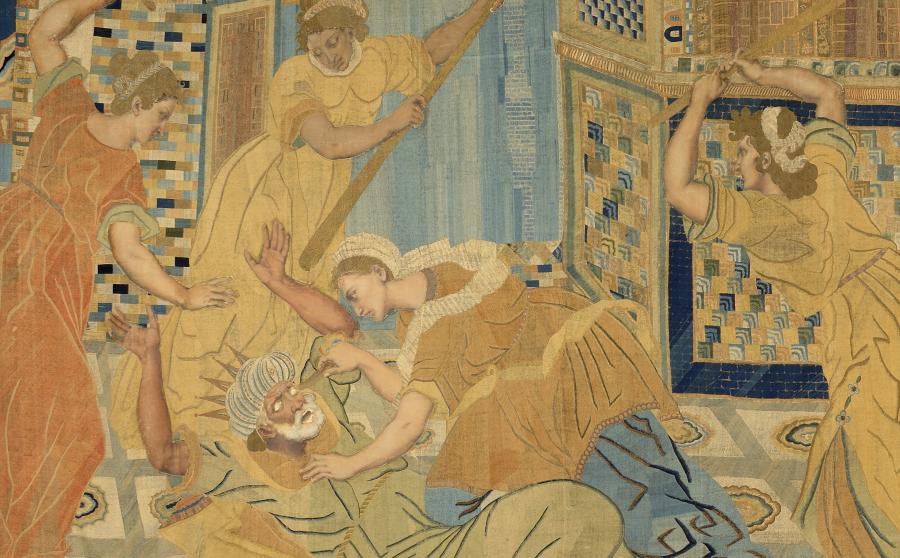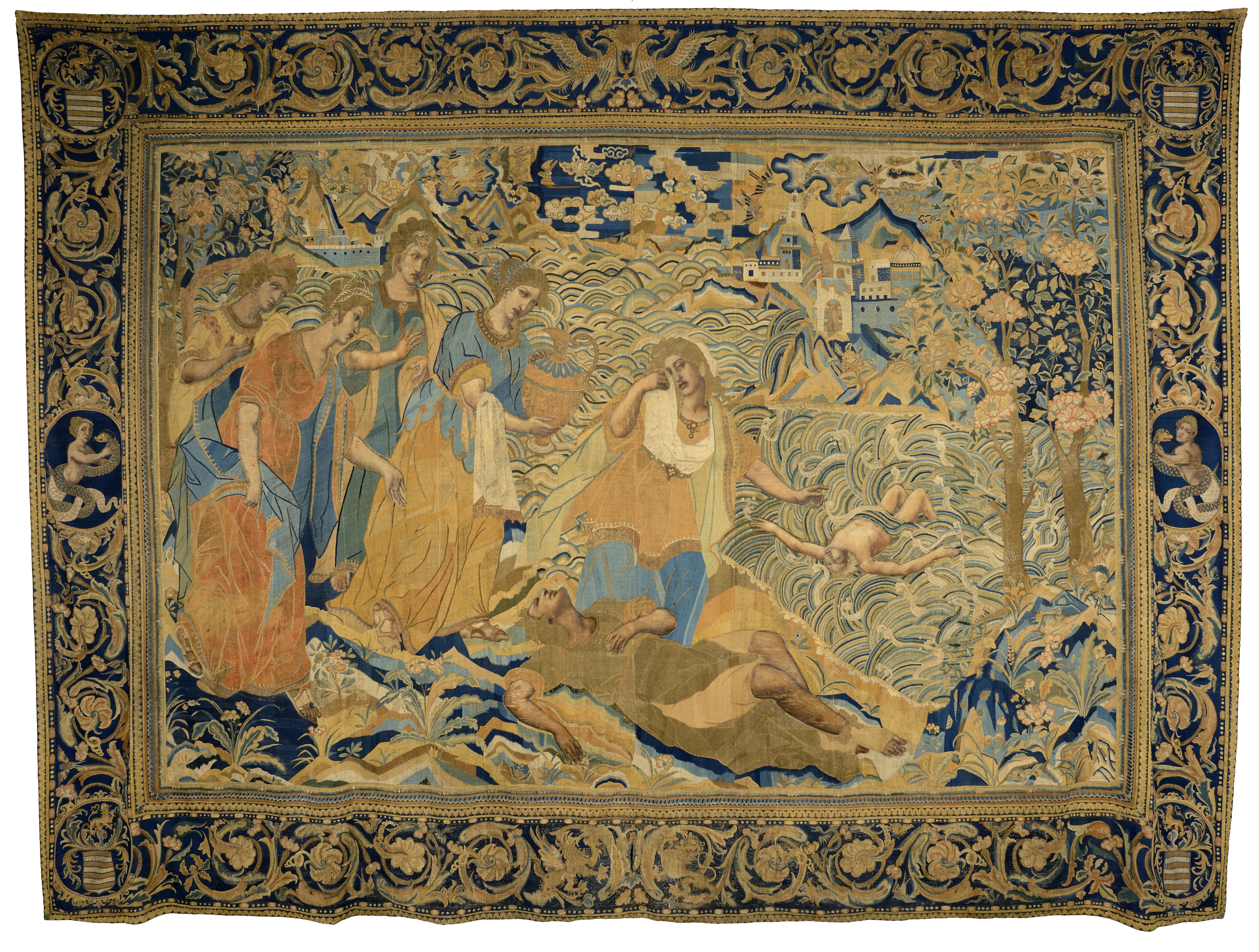Polymestor's murder of Polydorus and the revenge of Hecuba
Information sur l’artiste
CHINESE-PORTUGUESE WORKSHOP, MACAU?

La vengeance d'Hécube, Début du XVIIe siècle
Image © Lyon MBA - Photo Alain Basset
These hangings originally belong to a series of seven pieces. The suite, inspired by the Iliad, was probably made to fit the walls of an entire room, forming an unbroken line of decor. Since the Middle Ages, stories of Trojan heroes were indeed used by tapestry workshops to depict the tales in large-scale compositions. One of the episodes portrayed here is the revenge of Hecuba, widow of Priam. Its counterpart in the series is another piece of embroidery, also exhibited at the museum in Lyon. The tapestry depicts Hecuba's grief when she discovers, on the shore, the body of her son killed by his uncle, the King of Thrace. In the elegant surroundings of the palace, Hecuba gouges out the eyes of the murderer and thus avenges Polydore.
These hangings display several remarkable features. They are embroidered, although they incorporate pieces of painted silk satin to depict the faces and the skin. This creates a pictorial style which stands in contrast with the decorative, almost stylised portrayal of the background. An inscription in Chinese, revealed when one of the piece was restored, attributes these embroideries to a far-eastern workshop. The coats of arms in the corners support this hypothesis: they are believed to have belonged to a governor of Macau, a Portuguese enclave in Southern China, and date these embroideries to the beginning of the 17th century.
Polymestor's murder of Polydore
Polymestor's murder of Polydore
Early 17th century
Silk embroidery, gold thread and painted satin
H. 369.5; L. 489 cm
Inv. 1970-538
The revenge of Hecuba
Early 17th century
Silk embroidery, gold thread and painted satin
H. 369.5; L. 489 cm
Inv. 1970-537






